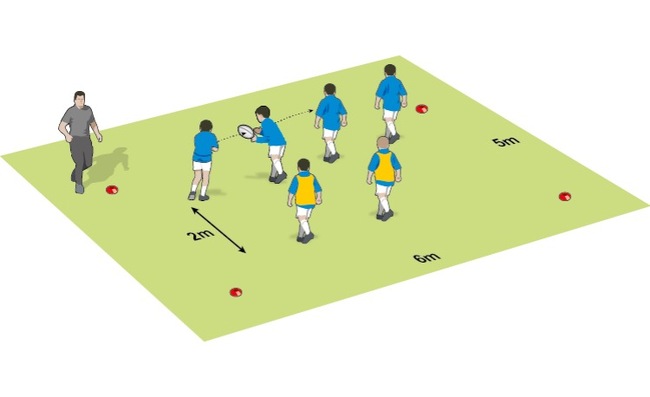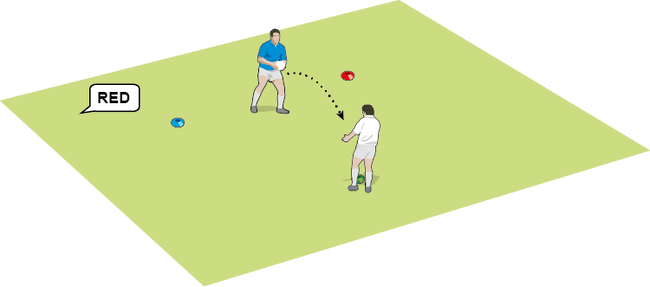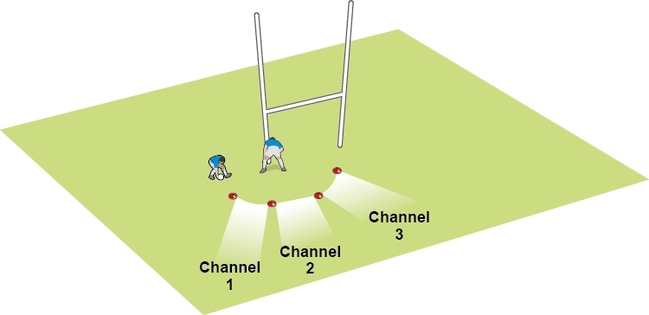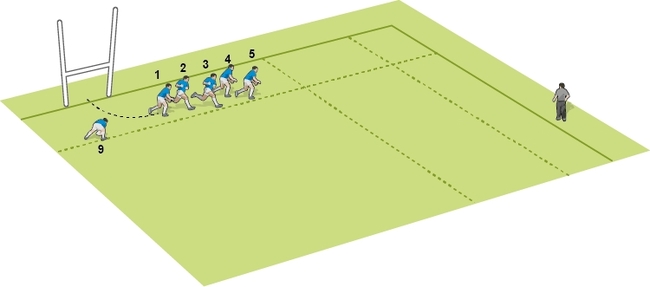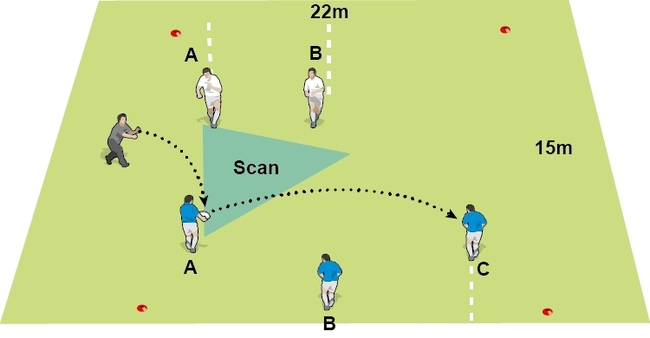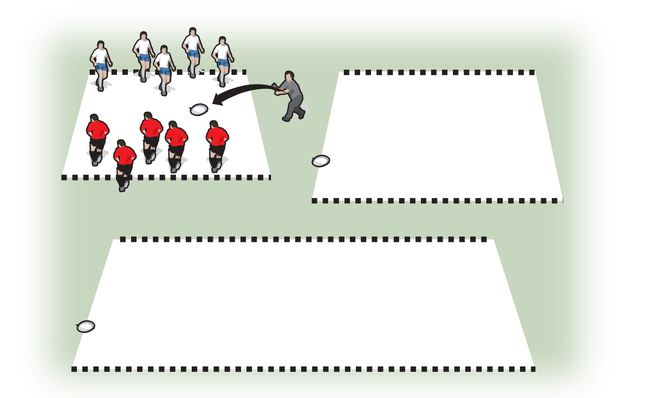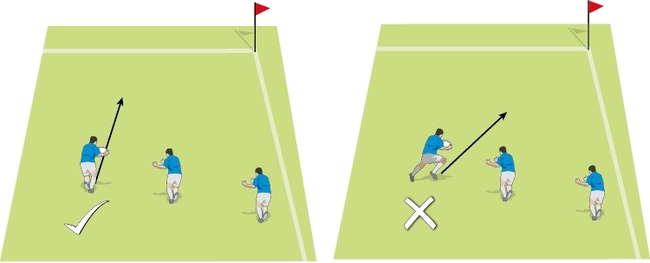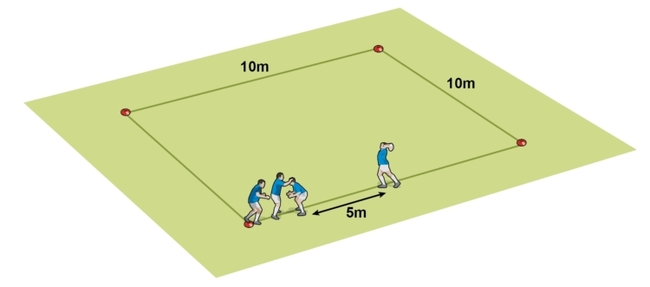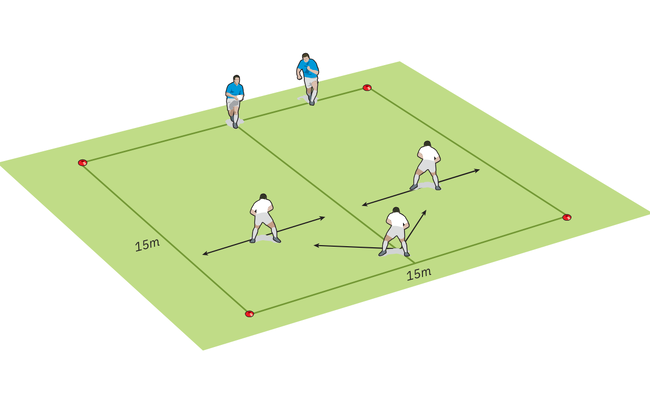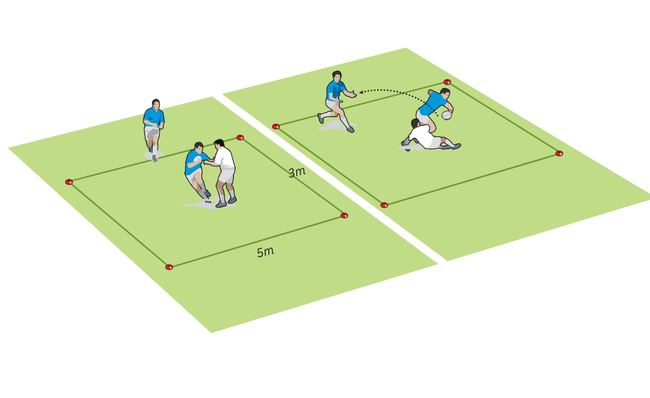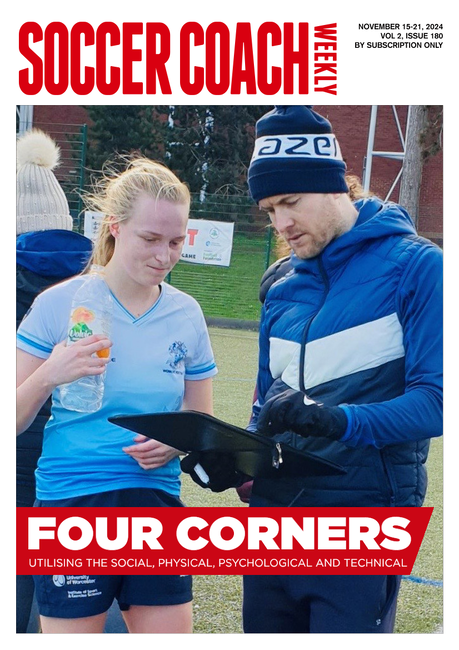Tackling revision session
You know that your team needs to keep returning to tackling practice. Here is a session that will revise
the basics and yet keep them motivated to improve their defence.
| SESSION DETAIL | RATIONALE | |
|
Warm up Confidence in contact games |
Play contact games in pairs. Players on their knees wrestle their opponent to the ground. One player lies on top of the other and tries to stop them getting up. One player starts on their hands and knees and resists as his partner tries to flip him over. |
Confidence in contact games are designed to get players used to being in contact with each other in controlled situations. They also develop core and upper body strength, vital for effective tackling. |
|
Game Walking rugby |
Two even teams play full contact rugby league style (play the ball through the legs after each tackle). Each team has five tackles before the ball is turned over. Play at walking speed on a wide pitch (enough space for a minimum of 5 metres per player). Referee the walking aspect very strictly to start with. If a player jogs or runs it’s immediately a penalty. Players can only tackle from the waist down and the ball carrier must carry the ball in two hands at all times. |
Reducing the speed actually makes tackling harder as the tackler cannot use the momentum of the ball carrier. It also reduces the impact of collisions and allows players to build confidence. Meanwhile, you can better evaluate their technique. Rugby league means there are no rucks and more individual tackles. |
|
Technical development 1 v 1 tackle technique |
Pair off players of equal abilty and size, and set them up in 3m squares. Start with the tackler on their knees and the ball carrier walking. Progress to the tackler crouching and the ball carrier slowly building up his speed. Finish with a full-contact 1 v 1 contest with the ball carrier trying to beat the tackler to score. Each pair can move on to the next progression at their own speed. |
Using equal ability/sized pairs means your weaker tacklers can develop confidence with less fear of being hurt. Focus on the basics:
|
|
Game Contact rugby |
Two even teams play full contact running rugby on a narrow pitch (enough space for about two metres per player). At restarts the attacking team starts 2 metres away from the defenders with a tap and pass. The defending team cannot compete for the ball after the tackle but must realign a metre back from the tackle. Count the number of consecutive tackles the defending team make and challenge their opposition to beat their score. |
The narrow pitch means lots of tackles will be made, but the ball carriers will find it difficult to build up momentum in their running. The defenders need to get used to getting back onside at the tackle and then moving forward to meet the ball carrier. |
HOW INTENSE IS THE SESSION
This session involves a lot of contact. Players will tire quickly and the quality will drop. Keep each section short and sharp, with plenty of rest periods inbetween. By the time the final game comes along, the players will be working on tackling when they are fatigued.
Consider using the session even when your side are tackling well, or defence has not been an issue. If your team has been winning a few games in a row, then this might be a good time to remind them of the basics should they face a tougher prospect in their next match.
Related Files
Premium Books
Newsletter Sign Up
Coaches Testimonials

Gerald Kearney, Downtown Las Vegas Soccer Club

Paul Butler, Florida, USA

Rick Shields, Springboro, USA

Tony Green, Pierrefonds Titans, Quebec, Canada
Subscribe Today
Be a more effective, more successful rugby coach
In a recent survey 89% of subscribers said Rugby Coach Weekly makes them more confident, 91% said Rugby Coach Weekly makes them a more effective coach and 93% said Rugby Coach Weekly makes them more inspired.
Get Weekly Inspiration
All the latest techniques and approaches
Rugby Coach Weekly offers proven and easy to use rugby drills, coaching sessions, practice plans, small-sided games, warm-ups, training tips and advice.
We've been at the cutting edge of rugby coaching since we launched in 2005, creating resources for the grassroots youth coach, following best practice from around the world and insights from the professional game.

